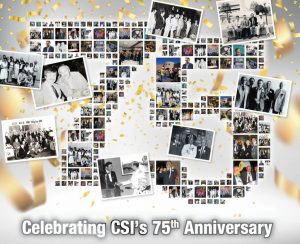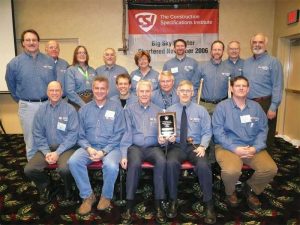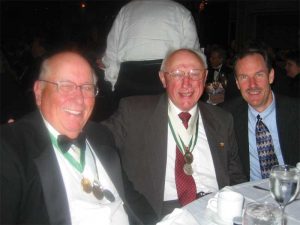
By Stacy Rinella
This year, the Construction Specifications Institute (CSI) reached an important milestone—it has been bridging the divide between various sectors of the building industry for seven decades now. In its bid to bring the “Four Cs” (i.e. clear, concise, correct, and complete) to project documentation and delivery, it has spent the last 75 years creating uniform standards and providing professional development opportunities.
 CSI’s story “officially” begins in March 1948, when articles of incorporation were signed, and 45 design/construction professionals became allies. At CSI’s first meeting, held in April, James B. Moore was elected as the president, objectives were established, bylaws were adopted, and membership classifications were defined.
CSI’s story “officially” begins in March 1948, when articles of incorporation were signed, and 45 design/construction professionals became allies. At CSI’s first meeting, held in April, James B. Moore was elected as the president, objectives were established, bylaws were adopted, and membership classifications were defined.
However, to understand CSI’s continuing mission of advancing the built environment, it is important to know the context under which it formed. In the late 1940s, it was a time between wars for the U.S. Construction—residential, commercial, institutional, and industrial—was on the rise. There were new building technologies, a burgeoning industry, and a booming population demanding homes, factories, offices, schools, and hospitals.
This increase in construction thrust specifications into the spotlight because these documents served as primary vehicles for communications in an increasingly complex industry. The government’s vast building program, under the auspices of Harry S. Truman’s administration, required a common system for the art and science of specifying. At the time, there was no standardization when it came to preparing the drawings or specifications. This meant confusion, inefficiency, a heightened potential for errors, and increased costs for designers, builders, and owners.
Enter Edwin Bateman Morris Sr., an architectural group chief in the U.S. Treasury Department’s Supervising Architect’s Office. Morris Sr. envisioned an organization where specifiers and others interested in construction communications could work toward the development of a common method. In September 1947, he held a meeting in Washington, D.C., with a group of architects, engineers, and others from the governmental sector. These individuals discussed the state of the industry; what the problems were, and what should and could be done to fix them.
 The following year, a motion was adopted to authorize the organization and incorporation of what would be known as the CSI. Joseph H. Swafford of the Veterans Administration was elected as the temporary president, while a set of bylaws were presented to ensure the proposed institute would occupy itself with business and technical matters. In March of 1948, the same year the Marshall Plan (European Recovery Act) was signed into law and Babe Ruth died, CSI came into being and five goals were outlined:
The following year, a motion was adopted to authorize the organization and incorporation of what would be known as the CSI. Joseph H. Swafford of the Veterans Administration was elected as the temporary president, while a set of bylaws were presented to ensure the proposed institute would occupy itself with business and technical matters. In March of 1948, the same year the Marshall Plan (European Recovery Act) was signed into law and Babe Ruth died, CSI came into being and five goals were outlined:
- Better specification writing.
- Simpler specifications.
- Standardized specifications for public construction projects.
- Uniform building codes.
- Study of new materials and processes developed during
World War II.




